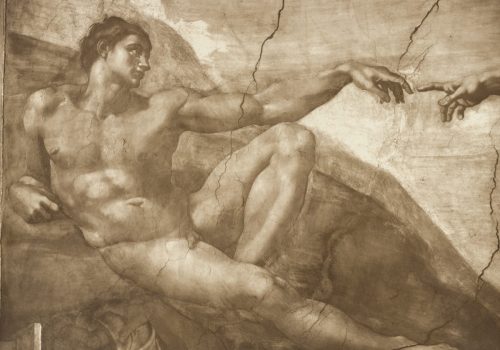From February 17 to May 14, 2018, the Musée Unterlinden in Colmar (France) features a retrospective of the work of Adolphe Braun (1812–1877). Braun was among the most influential French photographers of the nineteenth century. Today, The Eye of Photography invites you to discover his craft as a photo publisher and collector.
Owing to high demand for art reproductions, an entire industry sprung up in the early nineteenth century. Facsimiles that often required months of labor, strived to approximate the original in terms of dimensions, colors, and materials.
Photography quickly emerged as a serious rival to the existing techniques of reproduction, most notably lithography. However, it was still impossible to reproduce the originals in large quantities. Adolphe Braun’s major breakthrough came in 1866 when he purchased the rights to the process of carbon printing perfected by the English chemist Joseph Swan. Photographic images were stable for the first time, unlike albumen prints which faded with prolonged exposure to light.
Another of Braun’s innovations was the use of colored pigments in combination with carbon printing: initially working with eight, he expanded his palette to twenty. Nevertheless, the resulting photographs remained monochrome since the technique didn’t allow for applying multiple colors to the same image.
Braun first focused on more or less monochrome works, such as drawings and engravings, and did reproductions of sketches in the Louvre. In 1867, following a successful show at the Universal Exhibition in Paris, Braun’s camera operators were deployed in photographic campaigns in major museums and private collections around Europe. In 1868, the French entrepreneur obtained permission to photograph the entire Sistine Chapel ceiling. Michelangelo’s fresco had never been brought so close to the viewer. In recognition of this work, the pope appointed Braun official Vatican photographer.
Despite the industrialized production of images, Braun was never tempted to move to Paris, where photography thrived on nineteenth-century cultural and artistic novelties. Instead, he chose to expand his enterprise in the provincial context of textile industries. He followed here the logic of Louis-Désiré Blanquart-Évrard (1802–1872) who established his Imprimerie Photographique among the textile factories of Lille.
Enjoying access to reproductions of well- or lesser-known works of art, art historians were increasingly interested in the new study materials they were offered. In turn, influential art critics (Paul de Saint-Victor, Henry Jouin, Carl Ruland), university professors (Adolfo Venturi), and museum directors (Wilhelm Bode) encouraged Braun’s photographic campaigns. Their output revolutionized not only access to art, but also the perception of the artworks. Photographic images reproduced the condition of the work of art down to the minutest detail. By placing a body of shared visual resources within the reach of researchers, photography publishers gave a considerable boost to the emerging discipline of art history.
Private art publishers like Braun, the Alinari brothers, or Hanfstaengl fiercely competed to be the first to gain access to the largest collections. In 1877, the year Adolphe Braun died, his firm held over 33,000 images of works of art; in 1883, the Braun Company became the exclusive photographer for the Louvre and French national museums for the next thirty years.
Adolphe Braun: L’évasion photographique
February 17 to May 14, 2018
Musée Unterlinden
1, rue des Unterlinden
68000 Colmar
France
http://www.musee-unterlinden.com/
Exhibition catalog (French and German editions)
Adolphe Braun: Une entreprise photographique européenne au 19e siècle
Published by Editions Schirmer / Mosel
260 pp (French edition) €35
360 pp (German edition) €58
















